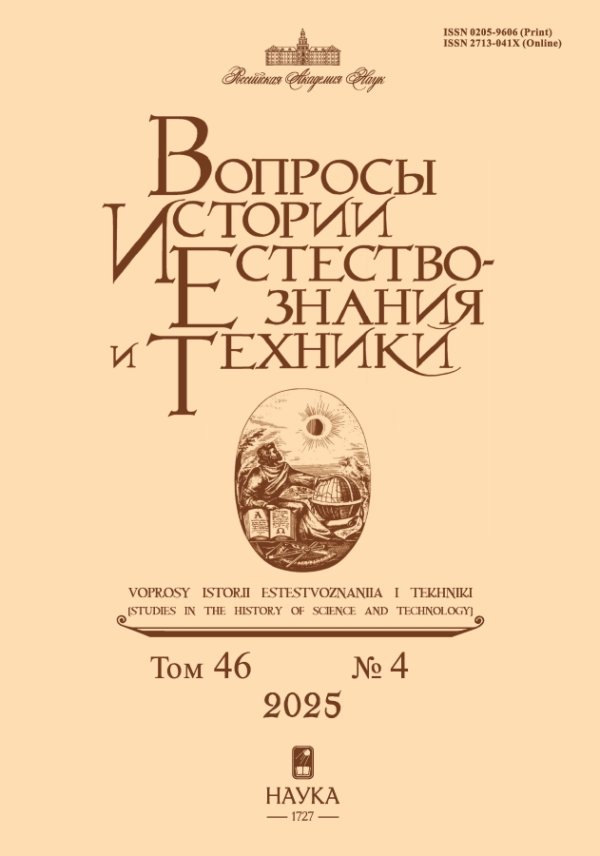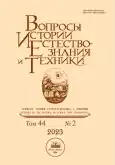Vol 44, No 2 (2023)
Towards the 300th Anniversary of the Russian Academy of Sciences
The Role of the USSR Academy of Sciences in the Formulation of the USSR Science and Technology Policy in the 1920s – 1940s
Abstract
 237-253
237-253


From the History of Technology
The History of the Use of Acoustics in Mechanical Engineering
Abstract
 254-268
254-268


Lessons from History
Pages from the History of the Zlatoust Prince-Michael Plant and the Samples of Its Products in the Collection of the Mining Museum of St. Petersburg Mining University
Abstract
 269-287
269-287


Sultan Selim II’s Volga – Don Canal in Russian and Turkish Historiography
Abstract
 288-306
288-306


Materials for the Biographies of Scientists and Engineers
Vladimir Nikolaevich Kessenikh: Soviet Physicist between Center and Periphery
Abstract
 307-340
307-340


Sources for the History of Science and Technology
Records Concerned with the Russian Geographical Society in the Archive of the Third Section of His Imperial Majesty’s Own Chancellery
Abstract
The making of the Russian Geographical Society (RGO) occurred during the “grim seven years” of Nicholas I’s reign. The reaction to the “Springtime of the Peoples” affected all spheres of public life in the empire. Censorship was tightened and administrative and police oversight of education and science strengthened. This is the first publication of the complete texts of 9 previously unknown records (1848– 1851) from the file “On the Russian Geographical Society”, stored in the holding (“fond”) No. 109 of the Third Section of His Imperial Majesty’s own Chancellery in the State Archive of the Russian Federation. The correspondence between the Head of the Section, A. F. Orlov, and his deputy, L. V. Dubelt, bespeaks their close attention to the RGO’s life: struggle between the factions in the RGO, elections of its governing bodies, and political sentiments among the RGO membership. These documents enable tracing the history of interaction between the RGO, state authorities, and other scientific organizations. Record 1 is Dubelt’s note “On the Geographical Society” of May 1, 1848, addressed to Orlov; record 2 is a memorandum “On the election of vice president of the Russian Geographical Society” of March 15, 1850, by an unknown author; and record 3 is a copy of a perlustrated letter from Count S. G. Stroganov to his brother, A. G. Stroganov, in which he discussed the results of the RGO vicechairman election. Records 4 and 5 comprise the correspondence between Dubelt and Orlov that indicates that Stroganov’s letter became known to the Emperor. Outraged by Stroganov’s accusations, Dubelt prepared an explanatory note (record 6) for the Emperor. Dubelt’s harsher report to Nicholas I (records 7 and 9: draft report and its final version, respectively) was dated March of 1851. A short draft note with a list of persons involved in medal minting in St. Petersburg (record 8) was attached to the case. The publication is supplemented with an annotated list of names mentioned in these records.
 341-352
341-352


Institutions and Museums
The History of Plant Physiology at the Immanuel Kant Baltic Federal University
Abstract
 353-368
353-368


Book Reviews
 369-374
369-374


 375-381
375-381


 382-385
382-385


 386-388
386-388


Academic Life
 389-396
389-396


 397-405
397-405


 406-408
406-408


 409-411
409-411


In Memoriam
 412-413
412-413












